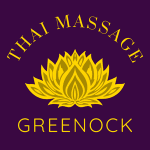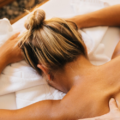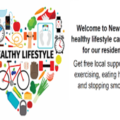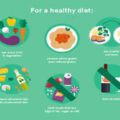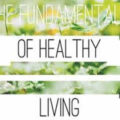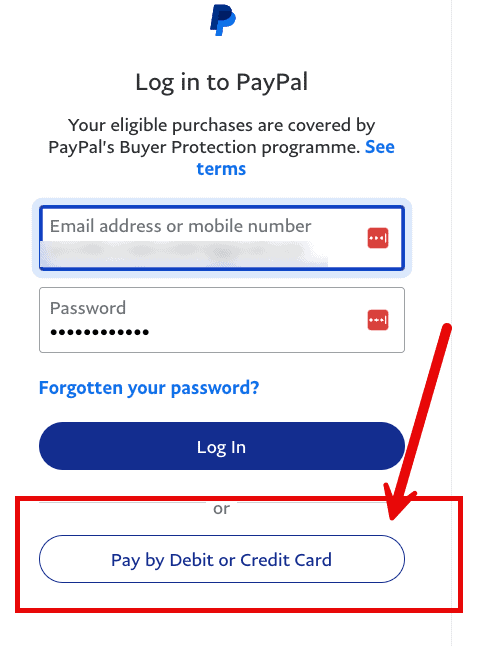Some self-help training and important tips on healthy living with Thai Massage.
 Pandemic life comes with a lot of things to deal with that we’ve never had to think about before. One of those things is “maskne,” or acne around the mouth and nose caused by wearing masks for prolonged periods of time.
Pandemic life comes with a lot of things to deal with that we’ve never had to think about before. One of those things is “maskne,” or acne around the mouth and nose caused by wearing masks for prolonged periods of time.
Before we get into the causes and solutions, let me point out that this article is here to offer possible solutions for people who are dealing with mask-related acne. I won’t be addressing whether masks are warranted or recommended or any of that – you’d be better off discussing that with a virologist or immunologist. Not me. This article is for people who have to wear or choose to wear masks, and want to address skin irritation that may have cropped up because of them.
So let’s get to it. Let’s try to figure out some solutions to this new and growing problem.
First of all, what is maskne?
The technical term for maskne is acne mechanica — clogged pores and pimples caused by friction and rubbing. Before this past year, most acne mechanica was caused by wearing sports equipment, bras, goggles, belts, and other things worn tight against the skin. All that changed with the pandemic. Never before in the history of the world had normal people been asked to affix masks over their nose and mouth for the majority of the day. Not only that, but often the same mask that you hastily dug out of your pockets, still greasy from the last time you wore it.
The big problem with tackling maskne is that it’s a new kind of acne mechanica (before mask-wearing became widespread, most cases were on other areas of the body) and the only research specifically geared toward it is observational. There are no controlled trials. There is just a flood of anecdotes that clinicians and researchers are wading through.
What can you do about it?
Try different masks.
Maskne is more than the friction. It can also be an immune reaction to the mask material. It’s also the lack of oxygen, the lack of air flow, the moisture build-up, the bacterial load accumulating. Different masks have different issues.
N95 masks are tight against the face and restrict air flow (by design). Things get hot and humid in there, and where the actual mask makes contact with your skin, the pressure is great enough to leave welts or bruises and stimulate true acne mechanica.
Disposable surgical masks aren’t as tight, but they’re tight and impermeable enough to create issues.
Cloth masks let air flow, for better or worse, but they also accumulate a lot of grease, grime, and bacteria.
Silk masks are also much easier on the skin, but their ability to filter viral particles is questionable at best.
Point being: all masks are potentially an issue. Try different types made from different material to figure out the issue.
Take frequent mask breaks.
Sometimes you have to wear the mask. Sometimes there’s just no getting around it, whether because of safety indoors or rules you must follow. If that’s the case, do your best to take breaks as often as possible. The American Academy of Dermatology Association recommends a 15 minute break every 4 hours, which is woefully inadequate in my opinion. Better is as often as you can.
Maybe it means pulling the mask down when there’s no one around or stepping outside to take an extended mask-free break.
Handle the basics.
Acne is ultimately an inflammatory condition. While mechanical maskne isn’t quite the same as hormonal or “internal” acne, it’s a safe bet to assume that you should at least shore up all the things that have shown to affect the latter.
Eat plenty of zinc (red meat, oysters, organ meats).
Get enough omega-3s: EPA (a long chain omega 3 found in marine foods) is usually lower in people with acne. Eat or .
Control your insulin: Since insulin can stimulate IGF-1 production, which in turn increases sebum production in the skin, chronically high insulin levels can cause clogged pores. Recent studies done during the COVID pandemic have found that acne and other inflammatory skin conditions are worse in patients with insulin resistance. Funny how , eh?
Try a mask bracket.
A mask bracket is a small accessory worn on the inside of your mask that creates airspace between your skin and the cloth. It may be just what you need to reduce friction and help with airflow near your mouth and chin, where mask-related breakouts are likely to occur.
Take sun breaks, take vitamin D.
A traditional treatment for acne was UV therapy, which was discontinued after dermatologists determined it to be “more harm than it was worth.” That’s nonsense, of course, as long as you’re getting natural “UV therapy” by actually being out in the sun. Furthermore, vitamin D plays an integral role in skin inflammation, so if it’s your only option taking supplements will help.
But actual midday sunlight on your face and body is ideal and will almost certainly improve maskne.
Remember: being cooped up inside has been terrible for our collective levels. Is it truly just a maskne epidemic, or is it a sun deficiency epidemic?
Change and launder your masks.
If you have to wear a mask for a prolonged period of time, change to a clean mask part-way through the day. Remember to wash your cloth masks as often as you would wash your clothes, instead of storing it in the cupholder of your car between uses. And use fragrance-free, eco-friendly detergents to avoid irritation that’s caused by cleaning agents and scents.
Avoid or limit harsh facial products.
Alcoholic aftershaves, chemical peels, acne treatments that dry the hell out of your skin, exfoliants, salicylic acid—these products are made with the mask-less face in mind. They likely weren’t tested on people wearing a tight-fitting, nearly-airtight mask for half the day. It’s a whole new world out there.
Avocado oil with tea tree oil.
Blend a couple tablespoons of and two tablespoons of MCT oil with some tea tree oil. Start low with the tea tree oil and slowly titrate up to confirm your skin can handle it. The avocado oil is good for your skin (and can even speed up the healing process), the MCT oil is anti-fungal and anti-bacterial, and the tea tree oil is effective against the acne-causing bacteria (even compared to pharmaceuticals). Don’t slather it on, though. You don’t want to get oily. A few drops rubbed into your face before and after mask-wearing will do the trick.
Put bacteria on your face.
Not all bacteria are bad. Just like our guts, mouths, and even nasal cavities have microbiomes, —a colony of beneficial bacteria serving a vital role. As a recent letter to the editor regarding COVID-related maskne suggested, maskne-prone skin probably has a dysfunctional or unbalanced microbiome, and regular acne-prone skin definitely has lower levels of ammonia-degrading bacteria. Enter , the probiotic skin spray that colonizes your skin with the ammonia-degrading bacteria that acne-prone skin is missing. Ammonia-degrading bacteria can modulate the skin’s immune environment, potentially nullifying the formation of acne.
Mother Dirt hasn’t been formally studied in the treatment of maskne, but it’s worth trying. Can’t see it hurting.
Nasal breathing (or mouthwash).
One ancedotal fix for maskne I’ve seen around the Internet is using mouthwash before donning your mask. Reason being, this kills the bacteria in your mouth and prevents you from contaminating the inside of your mask with it through constant mouth-breathing. Maybe that’s true. Maybe it’s not.
Instead of mouthwash, why not try exclusive nasal breathing? It’s healthier, anyway, and it may even improve your ability to fight off potential COVID viral particles. And you won’t be breathing out oral bacteria all day long.
(Mouthwash might be worth a shot, too)
Chew gum.
If the “breathing bacteria into your mask” hypothesis is true, then chewing gum while wearing a mask should also improve maskne by promoting nasal breathing and reducing pathogenic bacteria in the mouth.
will help reduce bacteria.
Don’t wear makeup under your mask.
Makeup is designed to be worn in open air. You know, where it can be seen. Wearing a mask over makeup just pushes it deep into the pores, promoting clogs and the formation of acne.
What’s the point, anyway, if no one can see it?
Only wear the mask when necessary.
I may get guff for this, but here goes: I have not seen much evidence that suggests that going mask-less outdoors in an open space is particularly risky. If you have evidence to the contrary, feel free to leave a link to the medical literature in the comments. Sure, if you’re shoulder to shoulder in a crowd, wear a mask. Sure, if you’re face to face with someone whose immunological status you can’t confirm for a long conversation, wear a mask. If you’re in an area where mask-wearing is mandatory outside, like a zoo or theme park, follow the guidelines. But in the vast majority of outdoor situations, going mask-less is fine. Hiking? Don’t need it. Briefly passing by someone on the sidewalk? Don’t need it. A study out of Italy (one of the areas hardest hit by COVID) found that “outdoor air in residential and urban environments was generally not infectious and safe for the public.”
If you must wear the mask outdoors on pain of death or imminent prosecution, wear the mask. If it’s a matter of showing respect and making people feel safe, I get that. But as far as infection risk, from what I gather it is very low.
But this has to be the first line of defense because the mask is the proximate cause of the acne. Limit the mask-wearing only to when you must wear it and you will limit the amount of friction and irritation applied to your face.
What about dedicated acne products?
I’m sure there are other products out there. A quick search of Youtube produces hundreds of beauty anecdotes from people who used baby shampoo or dandruff shampoo or a pharmaceutical formulation to fix their acne, but there’s no way to vet those. Taking more “natural” steps and replacing the lost bacteria that protects against other kinds of acne seems like the most evolutionarily-congruent path.
Look: you could go to a dermatologist (in your mask) and come home with a sack of pharmaceuticals. Maybe that would work. Maybe that’s a last resort. But I’d highly recommend that you do the best to attack the problem at its fundamental core.
I’d love to hear from you folks. What’s worked against maskne? What hasn’t? What’s made it worse?
Take care, everyone. Be safe out there.
(function($) {
$(“#dflbm5w”).load(“https://www.marksdailyapple.com/wp-admin/admin-ajax.php?action=dfads_ajax_load_ads&groups=674&limit=1&orderby=random&order=ASC&container_id=&container_html=none&container_class=&ad_html=div&ad_class=&callback_function=&return_javascript=0&_block_id=dflbm5w” );
})( jQuery );
References
The post appeared first on .
The above article What to Do About Maskne was first published on this site.
We hope that you found the article above of help and/or of interest. Similar content can be found on our blog .
Let me have your feedback in the comments section below.
Let us know which topics we should write about for you next.
Thai Massage Newsletter
To make sure you don’t miss out on any new posts or promotions that we introduce, sign up for our newsletter.
Once a month we run a special promotion for our newsletter members, so sign up now to make sure you don’t miss out.
It’s free and full of great health and nutrition tips and advice on how we can help you achieve your health and fitness goals.
